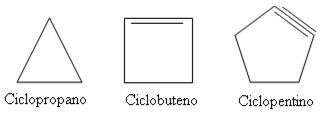Hydrocarbons are a group of organic compounds that have only carbon and hydrogen atoms, CxHy.
They are the most important compounds studied in Organic Chemistry and used in everyday life. They are generally obtained from petroleum and, therefore, are present in its derivatives, such as gasoline, kerosene, diesel oil, LPG (Liquefied Petroleum Gas), natural gas, paraffin, petroleum jelly, various polymers such as plastics and rubbers, among others. To give you an idea, they correspond to 48% of the Brazilian energy matrix.
They are non-polar compounds whose molecules show a weak interaction of the induced dipole type. For this reason, they are soluble in other non-polar substances, but they are practically insoluble in water, which is polar. Hydrocarbons that have 1 to 5 carbons are gaseous, such as methane gas (CH4). Those with 5 to 17 carbon atoms are liquids, such as one of the main constituents of gasoline, isoctane (C8H19). Those with more than 17 carbon atoms are solid, like C36H74, which is one of the components of paraffin.

Gasoline is a fraction of petroleum composed of a mixture of hydrocarbons
Hydrocarbons are less dense than water and most are poorly reactive.
Since carbon is tetravalent (it can make four bonds), it bonds in different ways with other carbon atoms and with hydrogens through single, double and triple bonds. Based on this, hydrocarbons can be subdivided into different groups, which are:
* Alkanes: When there are only single bonds between carbons. They are also called paraffins (from the Latin oleum, which is "oil", and affinis, which means “affinity”, as they are oily compounds).

Candles are basically made up of a mixture of alkanes
Its general formula is given by CnoH2n + 2 (where n = any whole number):
Examples:
CH4: n=1;
H3Ç? CH3: Ç2H6: n=2;
H3Ç? CH2 ? CH2 ? CH3: Ç4H10: n = 4.
* Alkenes: When there is a double bond between carbons. They are also called olefins (from the Latin parum, which is "small", and affinis, which means “affinity”, that is, “small affinity”, as they are little reactive compounds). Its general formula is given by CnoH2n:
Examples:
H2Ç? CH2: Ç2H4;
H2Ç? CH? CH3: Ç3H6;
H3Ç? CH? CH? CH3: Ç4H8.
* Alkynes: When there is a triple bond between carbons. Its general formula is given by CnoH2n-2:
Examples:
HC ≡ CH: C2H2;
HC ≡C? CH3: Ç3H4;
H3Ç? C ≡ C? CH3: Ç4H6.
* Alkadienes: When there are two double bonds between carbons. Its general formula is CnoH2n-2:
Examples:
H2Ç? HC? CH? CH2: Ç4H6;
H3Ç? H2Ç? CH? Ç? CH2: Ç5H8.
* Cyclic hydrocarbons: When its structure presents a closed chain.
Examples:

Examples of cyclic hydrocarbons
* Aromatics: When they have at least one aromatic nucleus or benzene ring, as shown below.

Benzene structural formula and simplified structural formula
To learn more about each of these subgroups of hydrocarbons and how this organic function is nomenclature, see the texts listed below.
By Jennifer Fogaça
Graduated in Chemistry
Source: Brazil School - https://brasilescola.uol.com.br/o-que-e/quimica/o-que-sao-hidrocarbonetos.htm
